10 Java Frameworks for a Seamless Workflow & Build Enterprise-Grade Web Apps

Author : John Prabhu 8th Oct 2019
There are a plethora of Java frameworks available for software developers to develop mobile & web apps. The frameworks help a lot in developing large & multi-layered business solutions. Java frameworks are familiar with the developers’ community & have gained their trust with time. Also, in the ever-dynamic IT industry, it is inevitable for Oracle to update Java from time to time. Hence, Java is becoming more & more robust & feature-rich from time to time.
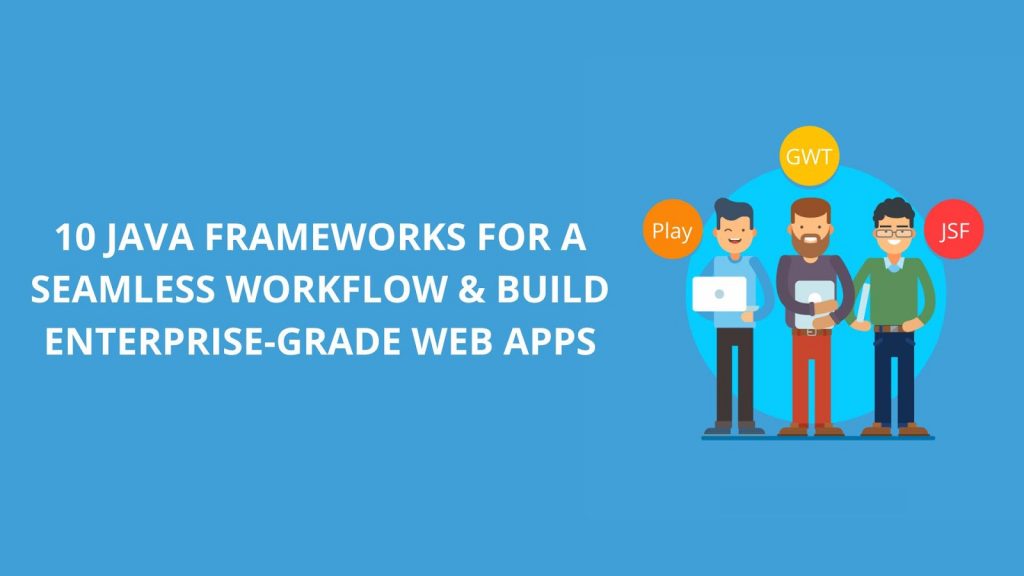
This aspect of the Java technology helps developers to build web apps for enterprises, develop independent applications for Windows & other operating systems. When it comes to web app development, you don’t have to rely only on the Java programming language, but can also take complete advantage of the Java frameworks. Moreover, the Java VM offers support to the Read Once Write Anywhere (ROWA) process.
Below are the top 10 frameworks for Java for developing enterprise-grade web applications.
1. The Apache Wicket – Open-source Component-based Web Application Framework Under Apache License

Wicket, aka Apache Wicket, is a lightweight framework to build intelligent user interfaces on Java EE. It is widely adopted to develop server-side web apps written in Java.
Anybody can integrate HTML language effortlessly & it relatively reduces the complexity of web app development. Also, the framework ships with reliable test applications that improve the process of web app development.
Key Points to Note
- Supports HTML5 & Java languages.
- Debug to test particular components of your code.
- Easy to write & organize your code.
- Documentation & support.
2. Grails (formerly Groovy on Rails) – Open-source Web Application Framework & Uses Groovy Programming Language

Grails is a web app framework based on Groovy programming language built on Spring Boot and can be deployed into existing Java web servers such as Tomcat or Jetty.
It comes with scaffolding capabilities that help you start fresh projects in no time. As the framework is based on the convention over configuration formula, instead of using XML files, it allows the apps to auto-wire automatically based on the naming schemes.
Grails takes advantage of Java EE for architecture and Spring for structuring the app through dependency injection.
Key Points to Note
- It comes with a set of flexible features that help to create RESTful APIs easily.
- GORM makes it easy to collaborate and/or communicate with any data source that supports GORM.
- Minimal server restart required during development.
- Grails makes it easy to modularize & use the view layer code several times.
- A very responsive & supporting community.
3. Google Web Toolkit (GWT) – Free & Open-source Web Application Framework Under Apache License
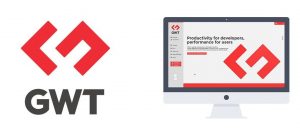
It lets developers build & maintain JavaScript front-end applications using Java. Interestingly, certain Google products such as Google Adwords, Blogger, Google Wallet, etc. are developed using GWT.
With this framework, developers are allowed to develop & test AJAX apps using Java. Some of the key industries where this framework is used predominantly are banking & trading.
Key Points to Note
- Create highly responsive web applications with workloads on the client-side.
- Migrate from a typical web application to a GWT application iteratively.
- The IDE support for GWT is the best.
- Impeccable debugging support offered by the mature Java IDEs.
4. Struts – Free & Open-source MVC-Based Web Application Framework Favoring Convention Over Configuration

Apache Struts helps to build attractive & interactive Java web apps. The interactive part of the Java web apps is achieved as a result of the MVC architecture.
With the simple & easy-to-use plug-in architecture, developers can extend the framework by including a JAR file to the app’s classpath. As a result, the plug-ins available in the JAR file can be shared easily among the community.
Apache Struts comes with several plug-ins out of the box & developers can integrate third-party plug-ins as well. Additionally, it allows you to integrate with various other Java-based web app frameworks.
Key Points to Note
- Apache Struts works incredibly well with AJAX, REST API & SOAP.
- Supports various templates & themes.
- Develop web apps using Plain Old Java Object actions.
- It can be integrated into other frameworks with the help of plugins.
- Stable & well-tested framework.
5. Spring – Open-source Web Application Framework Offering Infrastructural Support at the Application Level

Spring helps developers build flexible, simple, portable, & fast JVM-based systems & web apps. Also, it is an inversion of control container for the Java platform.
The framework bundles all the necessary features, resources, & utilities that are useful in creating almost any enterprise-grade web applications. Also, the framework collaborates well with other programming languages such as Kotlin & Groovy.
Spring is an outstanding performer when it comes to executing recurring tasks such as messaging, security & data processing. With the Spring framework, you can produce the business logic of development.
Key Points to Note
- Provides an efficient eco-system & community.
- Easy to check backward compatibility and run tests.
- Supports a large number of classes & packages.
- Documentation supports are available for quick learning of the framework.
6. Vert.X – A Tool-kit for Building Reactive Applications on the JVM.
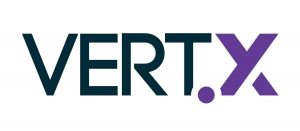
Eclipse Vert.X is an open-source polyglot event-driven web application framework that contains broad capabilities. Though the framework is capable of supporting other programming languages as well, it was primarily built for Java.
If you already have a flair in programming languages such as Ceylon, Groovy, Ruby, or JavaScript, you are good to go with Vert.X. One of the best parts about Vert.X is that it is a library & not a container.
Key Points to Note
- It is easy to use, scalable & concurrency.
- Event-driven run time, non-blocking.
- It supports several languages.
7. Vaadin – Open-source Web Application Framework Having a Large Library of Components & an Intuitive Java API.

Vaadin helps developers build modern progressive web apps that help in delivering great user experiences with minimal effort. Further, it collaborates well with Spring, CDI, & all of Java. Moreover, it is a powerful tool with an active worldwide community for the incredible support.
The architecture of Vaadin & the progressive web apps built using Vaadin prefer server-side to client-side. It is in contrast with the other solutions that you can find in Java & JavaScript. The simple & user-friendly UI of Vaadin helps to develop progressive web apps in no time. Also, this is one of the features that set Vaadin a class apart from other Java frameworks. You can also extend the framework with GWT, as well as Ajax and methods & techniques that Ajax offers.
Key Points to Note
- Useful documentation support for effective learning of the framework.
- Offers several plug-ins.
- Widespread community support.
- Enables you to create rich & interactive web interfaces.
- Uses server-side programming.
- Supports Google Web Tools & Ajax.
8. Play – Open-source Web Application Framework with MVC Architecture Under Apache License
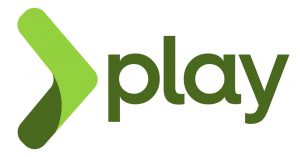
Play Framework is a high-velocity web framework for Java & Scala. It is built based on a lightweight, stateless, web-friendly architecture. It is developed with the help of one of the free and open-source toolkits – Akka. The open-source toolkit runs on the JVM.
The framework predominantly increases the productivity of developers as it is bundled with essential tools that allow them to quickly design, test & write codes for web apps. Since the framework adheres to the principles of Reactive manifesto, web apps can be loosely coupled.
Key Points to Note
- Improves developer productivity.
- Secure configuration.
- No Java EE sessions, & complete stateless connections.
- Available with unit Selenium, testing, & JUnit.
9. JavaServer Faces (JSF) – Standard Component-oriented User Interface (UI) Framework
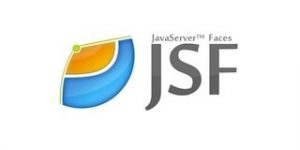
JavaServer Faces (JSF) plays a vital role in developing server-side UI components & for web apps. As it contains different sets of APIs, developers can easily manage the custom tag library & UI components for building the JSF interface.
Also, JSF is a key framework in the Java Enterprise Edition. When you couple JSF with Integrated Development Environment (IDE), building web applications becomes easier.
Key Points to Note
- User Interfaces can be developed effortlessly with its built-in UI component library.
- Robust event handling mechanism.
- Offers a clean separation between behavior & presentation.
- Component-level control over statefulness.
- Highly ‘pluggable’ – components, view handler, etc.
10. Hibernate – Free & Open-source Framework for Mapping an Object-oriented Domain Model to a Relational Database

Hibernate is one of the Object Relational Mapping (ORM) frameworks of Java predominantly used for developing database structures. The framework offers Hibernate Query Language (HQL) for database management. Thus, Hibernate helps in establishing seamless integration between the Java-based web applications & databases.
Moreover, it supports the concept of lazy loading that helps loading only the class that is required for the query to load. As Hibernate implements the necessary changes made to the database automatically, it is highly developer-friendly as well.
Key Points to Note
- It possesses the capability to generate primary keys automatically while storing the records into a database.
- It provides relationships such as One-To-Many, One-To-One, Many-To-Many-to-Many, Many-To-One.
- Hibernate supports inheritance, associations, collections.
Java is the most popular language out there in the tech space for building web apps. Every framework for java are unique and offer useful features to develop web apps that solve different needs. There it is a little hard for you to choose the perfect framework for your app idea.
Our expert developers have hands-on experience in delivering industry-leading services to your web app development needs. No matter whether you want an enterprise-grade web app or mobile app, we have got you completely covered. You can schedule a meeting for a requirement discussion by dropping an email at media@techaffinity.com stating your requirement, and we will get in touch with you shortly.
